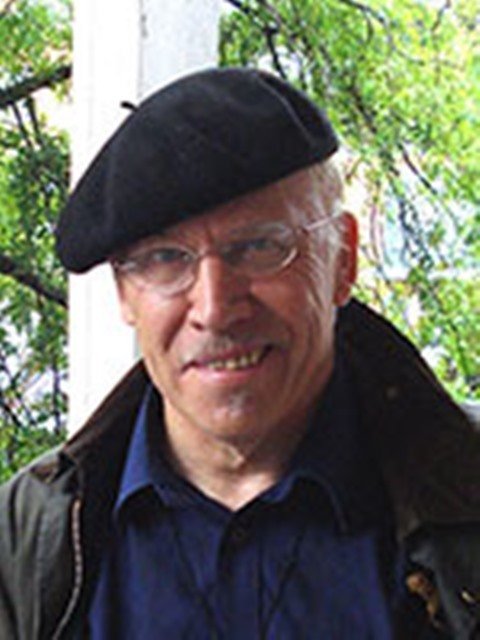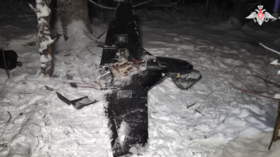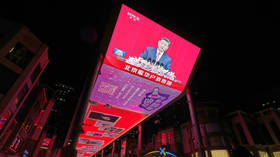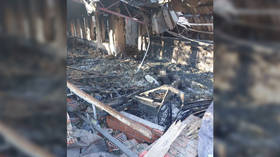Worse than Chernobyl: The inner threat of Fukushima crisis
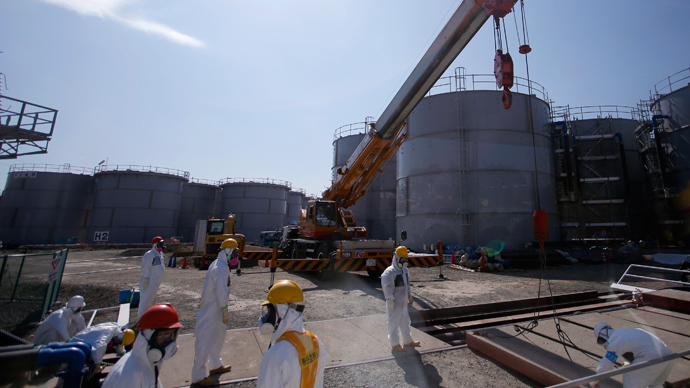
I recently pointed out, this operation has to go on forever - a long sickness, but at least not a sudden death. However, this week begins a new development in the potential sudden death department.
There is a curious and bizarre reversal of the natural at
Fukushima: a looking-glass world inversion. Unlike the standard
marine catastrophe, for example the Titanic, where the need is to
manically pump water out of the ship to stop it sinking, at
Fukushima the game is to madly pump water in, in order to stop it
melting down and exploding.
Probably because it is now clear that the saturation of the
ground from all the pumping water for cooling the several
reactors and spent fuel pools has destabilized the foundations of
the buildings, TEPCO is bringing forward its operation to try and
deal with what is perhaps the most dangerous of the four sites,
the spent fuel pond of Reactor 4. For this pond contains a truly
enormous amount of radioactive material: 1,331 spent fuel grids
amounting to 228.3 tons of Uranium and Plutonium buried inside a
swimming pool which has already dried out once and exploded. That
explosion blasted a significant, but unknown, quantity of
lethally radioactive bits and pieces of fuel element around the
site (where I heard they were bulldozed into the ground - who
knows?), but it also blew the top off the building, covered the
fuel elements under the water with rubble and pieces of crane
machinery, and no doubt twisted and melted a large proportion of
the remaining spent fuel.
Follow developments at Fukushima on RT's timeline.
The operation involves the kind of game that we are all familiar with in those machines in penny arcades. You know the ones. You stick in some coins. You have levers which manipulate a claw which you position over a teddy bear or a doll and then you let this down, pick the item up and drop it down a chute to win it. In the TEPCO version of this game, you build a crane over the spent fuel tank (or what’s left of it) and manoeuver a grab down into the rubble to deftly pick out a spent fuel assembly, like a 4.5meter long and 24cm square birdcage containing the zirconium metal clad fuel elements, each unit weighing about one third of a ton.
Of course, to make the game more interesting, they are not just sitting there like they were when the tank was being used. They are under water (sea water), covered in debris, corroded, busted, twisted, intertwined and generally impossible to deal with. And here is the really scary thing: if you manage to bust a fuel element, the best outcome is that huge amounts of radioactivity escape into the air and blow over Japan, just like before. The worst outcome is when two of these things get too close, perhaps because in pulling one out it breaks and falls against another one in the tank. Because then you suddenly have lots of fission, a lot of heat, a meltdown, possibly a big blast like before, and the destruction of the entire cooling pond. Or else the water boils off and the whole thing catches fire.
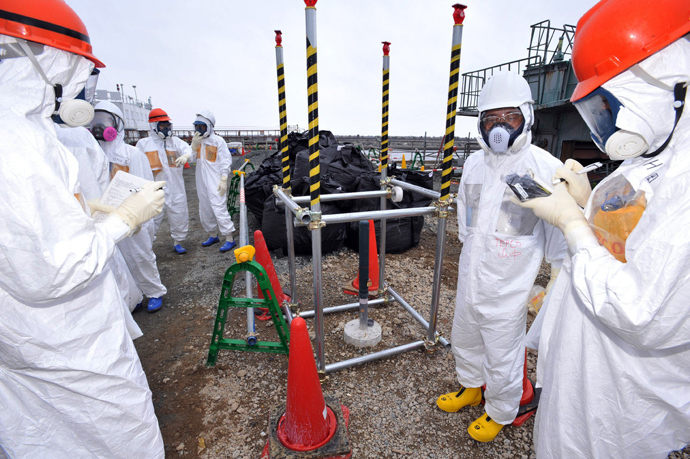
Then what happens? Not quite Armageddon, but as far as Japan is
concerned, almost. I bet they have contingency plans to evacuate
the northern island to Korea, China, anywhere. A lot of this
radiation will end up in the USA, a long way downwind,
admittedly, but then there is an awful lot of radioactivity
involved.
Another tank with highly radioactive water at the devastated Fukushima nuclear power plant has leaked, operator TEPCO reported on Tuesday. The contaminated water contains an unprecedented 80 million Becquerels of radiation per liter. The norm is a mere 150 Bq.
Let me lead you through what the spent fuel pond of Reactor 4 contains in the way of radionuclides. I was taken to task after my last article for not listing enough of the radionuclide contaminants. So for the record, though some may find it boring, let me remedy that. It is an impressive list of lethal material:
Strontium-89, Strontium-90, Yttrium-90, Zirconium-95, Niobium-95,
Ruthenium-106, Rhodium-106, Antimony-125, Iodine-131, Xenon-133,
Caesium-137, Caesium-134, Cerium-144 (loads of this),
Protoactinium-147, Europium-154, Plutonium-238, 239, 240, 241,
Americium (Yes)-241 and 243, Curium-242,243,244, and of course
Uranium 238,235 and 234.
These are the main ones. There are a lot more, and decay
daughters of these also. It is a scary amount of invisible death.
The total quantity of all these in the spent fuel pool of reactor
4 is about 1021 Becquerels, if we leave out the noble
gases and iodines maybe 1020 (that is, 1 with 20
zeroes). Maybe 50 to 100 Chernobyl accidents worth, or more
depending on what you believe came out of Chernobyl.
I list these because it should be made quite clear that the concentration of the media on the radio-caesiums and plutoniums and iodines is a very partial story. More discourse manipulation.
What lies within
Which brings me to another aspect of this grim piece of contemporary history. My expertise is in the health effects of internal radionuclides: what happens when these substances I list above get into human beings. Just after the Fukushima catastrophe I made a calculation and a prediction based on the scientific model of the European Committee on Radiation Risk (ECRR). I presented it at the German Society for Radioprotection/ ECRR conference in Berlin in May 2011.
This showed that there would be some 200,000 extra cancers in roughly 10 million population in the 200km radius of the site in the next 10 years, and 400,000 over 50 years. The current risk model adhered to and employed by the Japanese government is that of the International Commission of Radiological Protection, the ICRP. This predicts that no detectable cancers will be seen as a result of the “very low doses” received by the population.
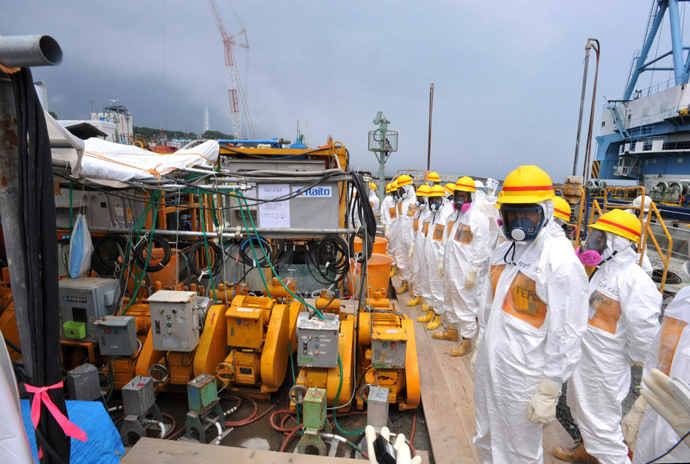
It is this nonsense that allows them to say it is safe to live in contaminated areas so long as the annual “dose” is lower than about 20mSv and to refuse to evacuate the children from such places. The ECRR has predicted and explained all the increased rates of illness seen after the Chernobyl accident in the contaminated territories and of course predicts that the first effects will be increases in thyroid cancer in children, just like Chernobyl. But the ICRP and those employing its model deny there are such effects in Chernobyl: the problems there are due to vodka, radiophobia etc. Or that the children in Belarus who did develop thyroid cancer were iodine deficient. So in effect, Fukushima is a test of the two models. A test which has now begun.
It was reported recently that a survey of thyroid conditions in
young people age 0-18 by Fukushima Medical University found 12
confirmed cases and 15 suspected cases of thyroid cancer in
178,000 individuals screened. This is in a two-year period. The
2005 Japanese national incidence rate for thyroid cancer aged
0-18 is given in a recent peer reviewed report as 0.0 per
100,000. That is to say there are no cases. Let me be generous
and say that the annual rate per 100,000 is 0.05. That means in
the last two years we would expect 0.18 cases: we actually see at
minimum 12 cases but most likely 27 cases.
In epidemiology we calculate the excess risk as 27/0.18 which is 150 times the expected rate. Japan Times tells us “Researchers at Fukushima Medical University, which has been taking the leading role in the study, have said they do not believe the most recent cases are related to the nuclear crisis.” Right, that’s OK then. This must have been a random cluster, unluckily, but coincidentally near Fukushima, a source of radioiodine which is a known cause of thyroid cancer.
The risk model
The United Nations Scientific Committee on the Effects of Atomic
Radiation, UNSCEAR would agree. Also the World Health
Organization (since 1959 part of the International Atomic Energy
Agency [IAEA] as far as research into radiation and health is
concerned). In its preliminary report on Fukushima Health
effects, issued in 2012, it states that the maximum thyroid dose
was 35mSv and that most received a lot less. On the basis of the
ICRP model you would not expect (says radiation and health
supremo Dr. Wolfgang Weiss) to see what is clearly happening: an
accelerating thyroid cancer epidemic, worse than and earlier than
the Chernobyl thyroid cancer epidemic.
It is one more piece of evidence that the current ICRP risk model, employed by the Japanese (and all other world governments) is totally wrong and unsafe and must urgently be abandoned. Internal radiation exposure, as the ECRR approach shows, cannot be assessed by the simple concept of ‘Absorbed Dose’. For those who want a more technical explanation you can see my recent article.
I met Weiss in 2011 at a conference of radiation research in Paris which he was running. At this MELODI conference I took the microphone and told the 650 delegates that the ICRP model was dead in the water and its use continued to kill the people it was intended to protect. I was pursued up the aisle by the Chair, Dr. Sisko Salomaa (of the Finnish Radiation Protection organization STUK), to wrestle the microphone away from the dangerous lunatic Busby.

But Weiss, Salomaa, and the other radiation agency apparatchiks
well know that the ICRP and the other global radiation protection
agencies UNSCEAR, IAEA and WHO are run by people (like
themselves) who are not experts on internal radiation pollution
and health, and rarely have any real hands-on research expertise.
They rely exclusively on the Hiroshima bomb studies which ignored
internal radiation, the black rain of uranium that affected the
controls outside the city and the control entrants after the
bomb.
I have checked out their research publications: it is just the
case. Ask them. Their job has been - and still is - to protect,
not the public, but the nuclear industry and the military. After
Chernobyl, some of them turned up in Kiev when I was there in
2000 and talked down the effects of the radiation. Watch them in
action here. By 2005, these Chernobyl cancer effects were
turning up in Europe. One study in Sweden by Martin Tondel found
an 11 percent excess cancer risk for every 100kBq/sq metre of
caesium-137 contamination. Tondel was swiftly dealt with by his
boss, Lars Erik Holm, one-time head of ICRP and now Medical
Officer of Health of Sweden (Yes).
Again and again, these agencies and their spokespersons have
denied what was in front of their very eyes. Billions of dollars
are poured into cancer research, research on radiation, but any
attempt to carry out epidemiological studies of those exposed to
internal radiation, from depleted uranium in Iraq, to Chernobyl
contamination, to the shores of the massively-contaminated Baltic
Sea have been turned down for funding. I know. I applied with
colleagues from Latvia Technical University and from the
Karolinska Institute to look at cancer on the shores of the
Baltic; no way were we going to be allowed to even get the data,
let alone be funded.
As more evidence emerges from this ghastly inadvertent Fukushima
experiment, we will see more and more that we have governments
and radiation agencies who are wielding unsafe and incorrect
scientific assessments of reality. Additionally, we have what
might become one of the most serious global public health events
of human history being overseen by a private profit-making
company, TEPCO, with no good track record of competence or
believability.
And appropriately, in this looking-glass world, in a bizarre echo of these two inversions of justice and democracy, we have a sinking ship that can only be saved by pumping water into it.
What are we going to do with these people who have let us down, who are letting us down? They all should be put into a court and tried and sent to jail for what are effectively war crimes, in this new war, the invisible genetic poisoning of the planet and its innocent inhabitants.
Christopher Busby from the European
Committee on Radiation Risks for RT
The statements, views and opinions expressed in this column are solely those of the author and do not necessarily represent those of RT.
